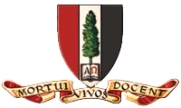Today we launched into our study of the relationship of Cádiz and the sea. With tired arms from kayaking the day before we arrived at San Felipe Neri, where we focused on the Andalusian tuna fishing industry in preparation for the trip on which we would embark later in the day. We learned about the long and rich history of tuna fishing in the Iberian Peninsula, which dates all the way back to the Venicians. From the primitive, close-to-shore use of small nets, to the modern, efficient technique involving multiple ships and the lifting of a large net from deep in the sea called El Levanté, we plotted the course of fishing techniques through the ages. We took a bus to La Caleta, a nearby beach, where we met a few fishermen who explained to us some of their own methods of fishing. At the end we were all treated to a tasty helping of fresh seafood.
We then had a few hours until we met up again to go to Barbate, a coastal fishing town about an hour and a half via (very comfortable) coach bus. Part of what has been so wonderful about Cádiz has been our free time. Students have plenty of time to go to the beach together for a quick swim or football game, and with our ever-increasing knowledge of the bus routes of Cádiz, we can return to our homes quickly. That’s not to say there haven’t been a few mad dashes along the beach to make it home before curfew, but in general, we are beginning to feel more like true gaditanos when it comes to getting around the city.
At 3:45 we all were aboard the bus and ready to go. Or rather, all of us but a few latecomers who will remain nameless. After a scenic drive through sometimes pastoral, sometimes mountainous Spanish coastline, we arrived in Barbate. There we visited an informational center about tuna fishing through the ages, and later a museum dedicated solely (pardon the pun) to the town’s fishing industry. There we learned about the process of preparing the tuna for consumption. It turns out that tuna is air-dried in a sterilized environment for 20 days on average before it is shipped out for distribution–who knew? Additionally, we learned about the different parts of a tuna and how the fattier, more tasty cuts of tuna cost more. We were then treated to the rather unfortunate gastronomic combo of watching a tuna being disemboweled and filleted up close and much too personal, and immediately after eating some traditional tuna dishes. Although it was very interesting and educational, I’ll confess that my stomach was not as big a fan of the experience as my mind.
Finally, after a long day of learning, we made a short walk to a nearby beach where we played a big game of beach football and volleyball, and made use of the beautiful late-day might for some nice photos. Will Connaughton continued his domination of beach football with too many receptions to count. Tired but satisfied, we piled into the bus to go back to what is truly starting to feel like home, Cádiz.
-John Philippides





